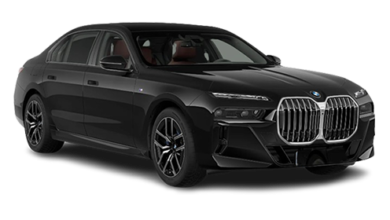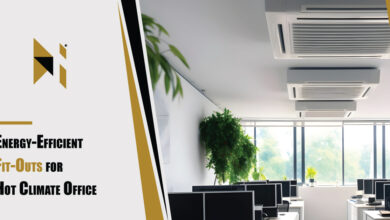Common Daewoo Issues and How to Fix Them
Despite no longer being in production under the Daewoo brand, many of these compact cars remain on the road thanks to their affordability and practicality. However, like any aging vehicle, Daewoos have their fair share of recurring problems. Whether you own a Daewoo Matiz, Lanos, Nubira, or Leganza, being aware of daewoo common faults can save you both time and money.
In this blog, we’ll break down some of the most frequently reported Daewoo issues, what causes them, and how you can fix or prevent these problems from escalating.
1. Engine Stalling or Rough Idling
The Problem:
A common complaint among Daewoo owners is random engine stalling or the engine idling roughly. This can happen at stop lights, while slowing down, or even during normal driving.
The Cause:
One of the most common causes is a dirty or faulty Idle Air Control (IAC) valve. This part controls the engine’s idle speed and can become clogged with carbon buildup over time. Other culprits include a failing Mass Air Flow (MAF) sensor or vacuum leaks.
The Fix:
- Clean or replace the IAC valve.
- Inspect vacuum hoses for cracks or disconnections.
- Replace the MAF sensor if it’s malfunctioning.
Tip: A diagnostic scan can help identify error codes pointing directly to the faulty component.
2. Electrical Issues
The Problem:
Older Daewoo models are notorious for electrical gremlins. You might experience flickering dashboard lights, malfunctioning power windows, or issues with the central locking system.
The Cause:
Over time, wiring harnesses can become brittle or corroded. Fuses, relays, and switches may also wear out, especially if exposed to moisture or poor-quality repairs.
The Fix:
- Check all fuses and relays, especially for components that are misbehaving.
- Inspect the battery terminals and ground wires for corrosion.
- Use a multimeter to test switches and circuit continuity.
Warning: Electrical repairs can be complex. If you’re unsure, it’s best to consult a qualified auto electrician.
3. Transmission Slipping or Jerking
The Problem:
Some Daewoo owners report transmission slipping, jerking during gear changes, or delays when shifting from park to drive.
The Cause:
Low or dirty transmission fluid is often to blame. In some cases, the transmission control module (TCM) may be faulty, especially in automatic models.
The Fix:
- Check and change the transmission fluid if it’s old or low.
- Inspect for any transmission fluid leaks.
- If problems persist, have the TCM tested and replaced if needed.
Reminder: Regular transmission servicing can prevent many of these issues from occurring.
4. Timing Belt Failure
The Problem:
A snapped timing belt can cause catastrophic engine damage in many Daewoo models, especially the 1.6L engines used in the Lanos and Nubira.
The Cause:
The timing belt wears out over time and must be replaced at manufacturer-recommended intervals–-usually every 60,000 to 100,000 kilometers.
The Fix:
- Replace the timing belt before it fails.
- It’s wise to replace the water pump, tensioner, and pulleys at the same time.
Pro Tip: Preventive maintenance is key here. Once the belt breaks, engine damage can be severe and costly.
5. Cooling System Problems
The Problem:
Overheating and coolant leaks are among the most frequently reported daewoo common problems, especially during warmer months.
The Cause:
Worn radiator hoses, failing thermostats, and old water pumps can cause these issues. Some models also suffer from weak radiator caps that don’t hold pressure.
The Fix:
- Inspect and replace any cracked or bulging hoses.
- Test and replace the thermostat if it’s stuck closed.
- Replace the radiator cap and check for leaks in the cooling system.
Important: Never ignore signs of overheating–-it can lead to warped cylinder heads and engine failure.
6. Brake System Wear
The Problem:
Spongy brakes, squealing noises, or uneven braking are common Daewoo common faults as these vehicles age.
The Cause:
Worn brake pads and rotors are the usual suspects. Faulty brake calipers or low brake fluid levels can also lead to braking issues.
The Fix:
- Replace brake pads and rotors as needed.
- Flush and replace the brake fluid every 2-3 years.
- Check for brake fluid leaks around the calipers and lines.
7. Suspension and Steering Woes
The Problem:
Clunking noises over bumps or loose steering can plague older Daewoo models.
The Cause:
Worn bushings, ball joints, and tie rods are typical culprits. Some models also experience power steering fluid leaks.
The Fix:
- Inspect and replace worn suspension parts.
- Check for and repair any leaks in the power steering system.
- Perform a wheel alignment after repairs.
Final Thoughts
Owning an older Daewoo doesn’t have to mean constant trips to the mechanic. With a little knowledge and regular maintenance, many daewoo issues can be prevented or easily resolved. The key is staying ahead of Daewoo common problems by addressing them early.
If you’re looking for more DIY guides, expert troubleshooting tips, or advice on how to maintain your vehicle, be sure to visit CarWorkshop Blog. Our team regularly publishes hands-on articles and repair walkthroughs to help you keep your Daewoo running smoothly for years to come.



